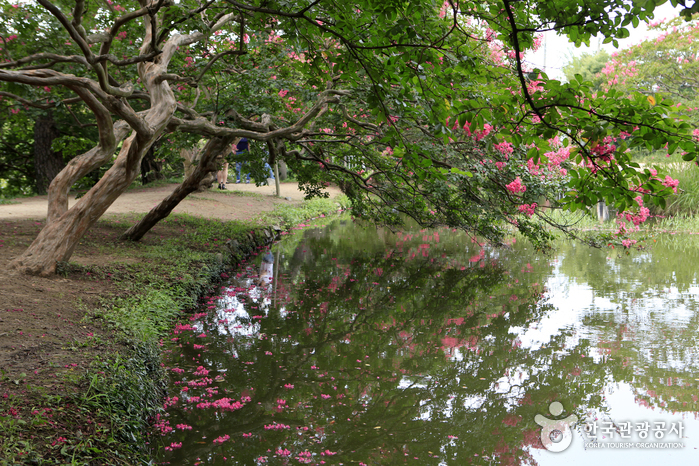Myeongokheon Garden (담양 명옥헌 원림)
20.0Km 10010 2019-08-20
103, Husan-gil, Damyang-gun, Jeollanam-do
+82-61-380-3752
Located in the eco-village of Husan-ri, Myeongokheon Garden was the garden of Oh Hui-do (1583-1623) of the Joseon dynasty and served as a simple, countryside sanctuary where the scholar read and wrote many books. Main features of the garden are the Myeongokheon Pavilion, where the scholar held lectures, and the square-shaped pond in front of the pavilion that is surrounded with graceful flowering trees. The flowering trees around the pond include red pines and crape myrtles. On the right side of Myeongokheon Garden you’ll see a 300 year-old ginkgo tree, which is where King Injo (1623-1649) of the Joseon dynasty tied his horse when he went to visit Oh Hui-do.
Hwasun Dolmen Site [UNESCO World Heritage] (화순 고인돌군 유적 [유네스코 세계문화유산])
20.0Km 21624 2020-06-04
Goindol 1-ro, Hwasun-gun, Jeollanam-do
+82-61-379-3178
The Hwasun Dolmen Site is located near the waterfalls of the mountain pass linking Dogok-myeon of Hyosan-ri and Chunnyang-myeon of Daesin-ri. According to experts, 135 of the 980 stones in Dogok-myeon Hyosan-ri are dolmen. There are also about 100 damaged stone tables that still maintain their original form.
What makes the Hwasun dolmens special is that in such a small district there are as many as 596 dolmen, including Korea’s biggest stone table.
Acknowledging the importance of the cultural assets, the Hwasun Dolmen Site was registered as World Heritage No. 997 in year 2000 along with Gochang and Ganghwa Dolmens.

![Hwasun Dolmen Site [UNESCO World Heritage] (화순 고인돌군 유적 [유네스코 세계문화유산])](http://tong.visitkorea.or.kr/cms/resource/03/2515703_image2_1.jpg)
 English
English
 한국어
한국어 日本語
日本語 中文(简体)
中文(简体) Deutsch
Deutsch Français
Français Español
Español Русский
Русский